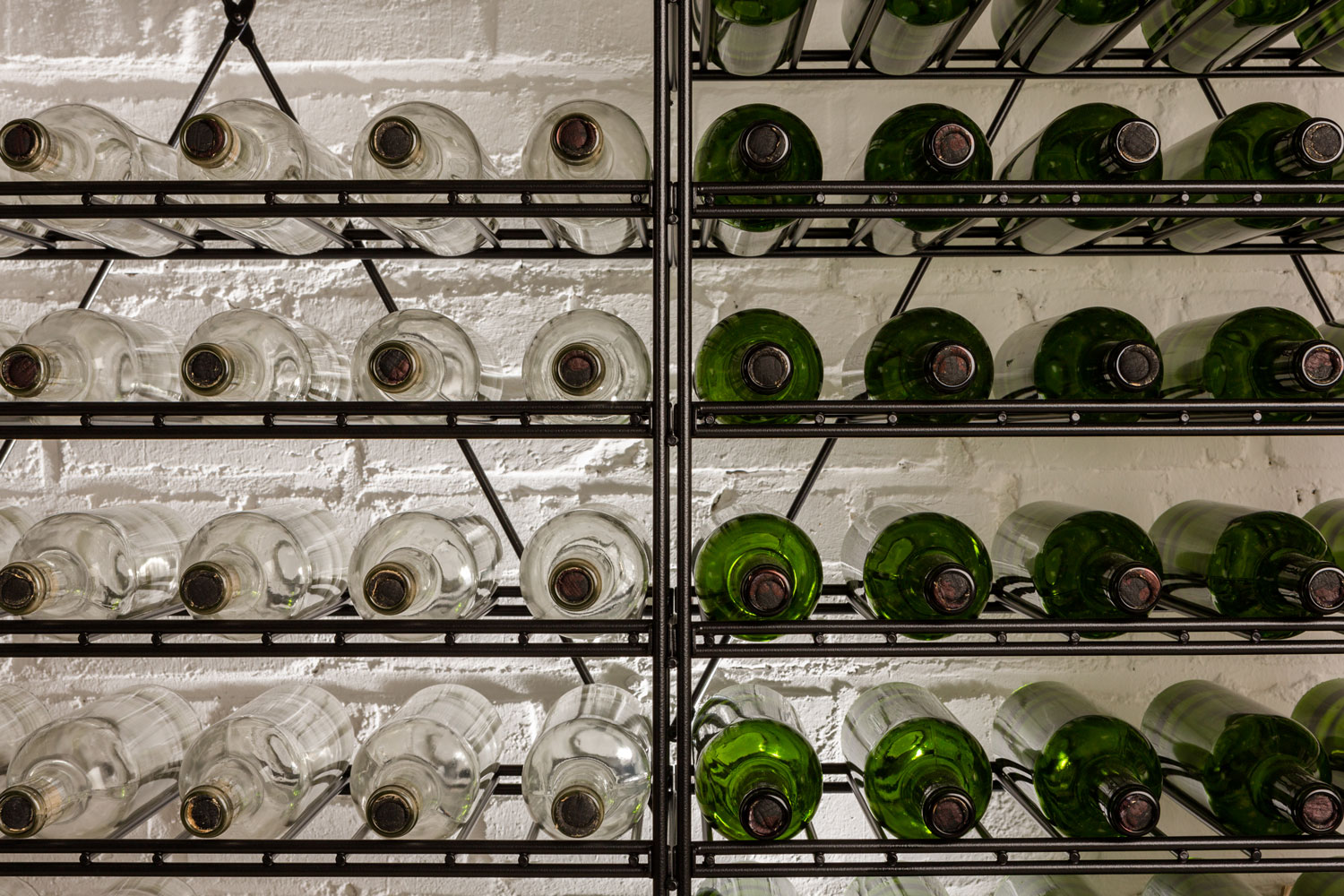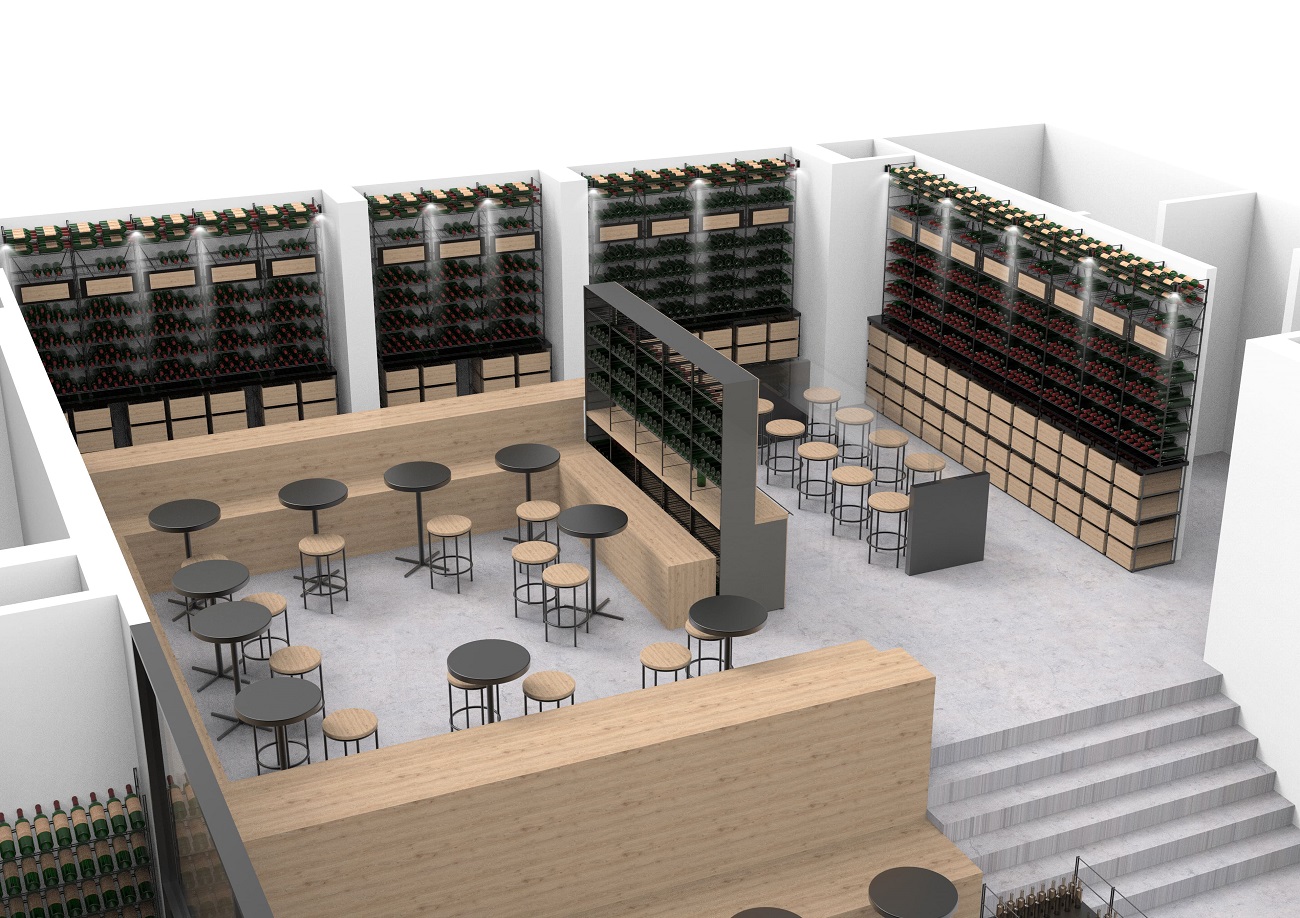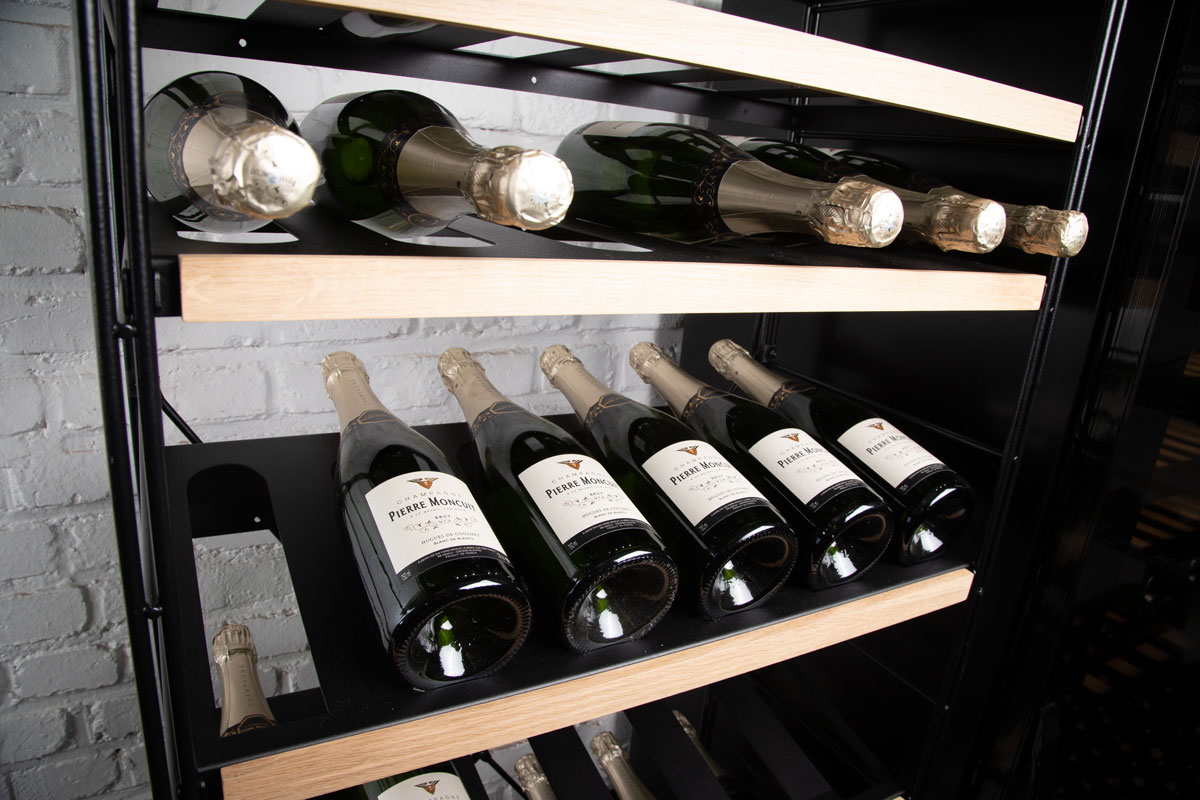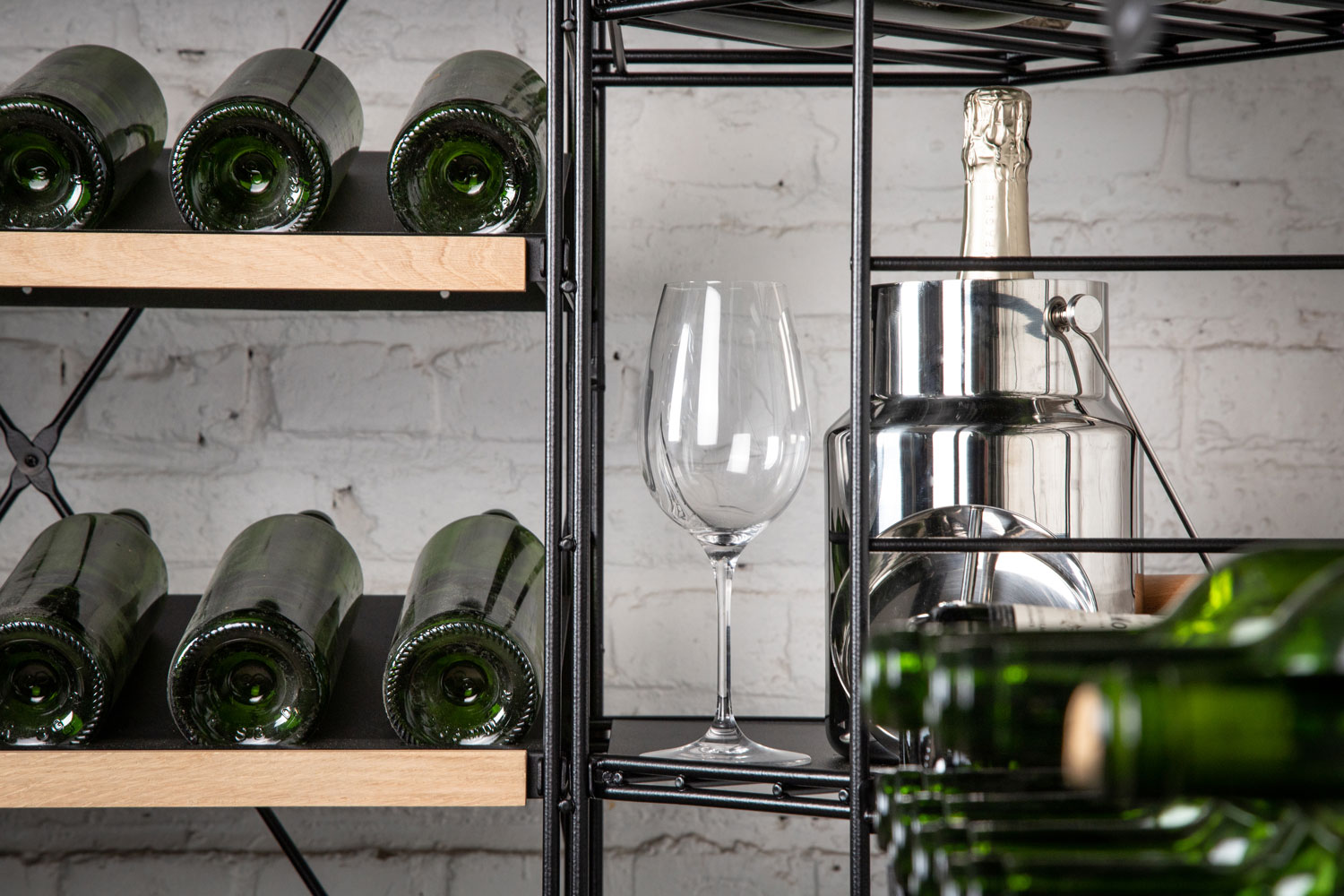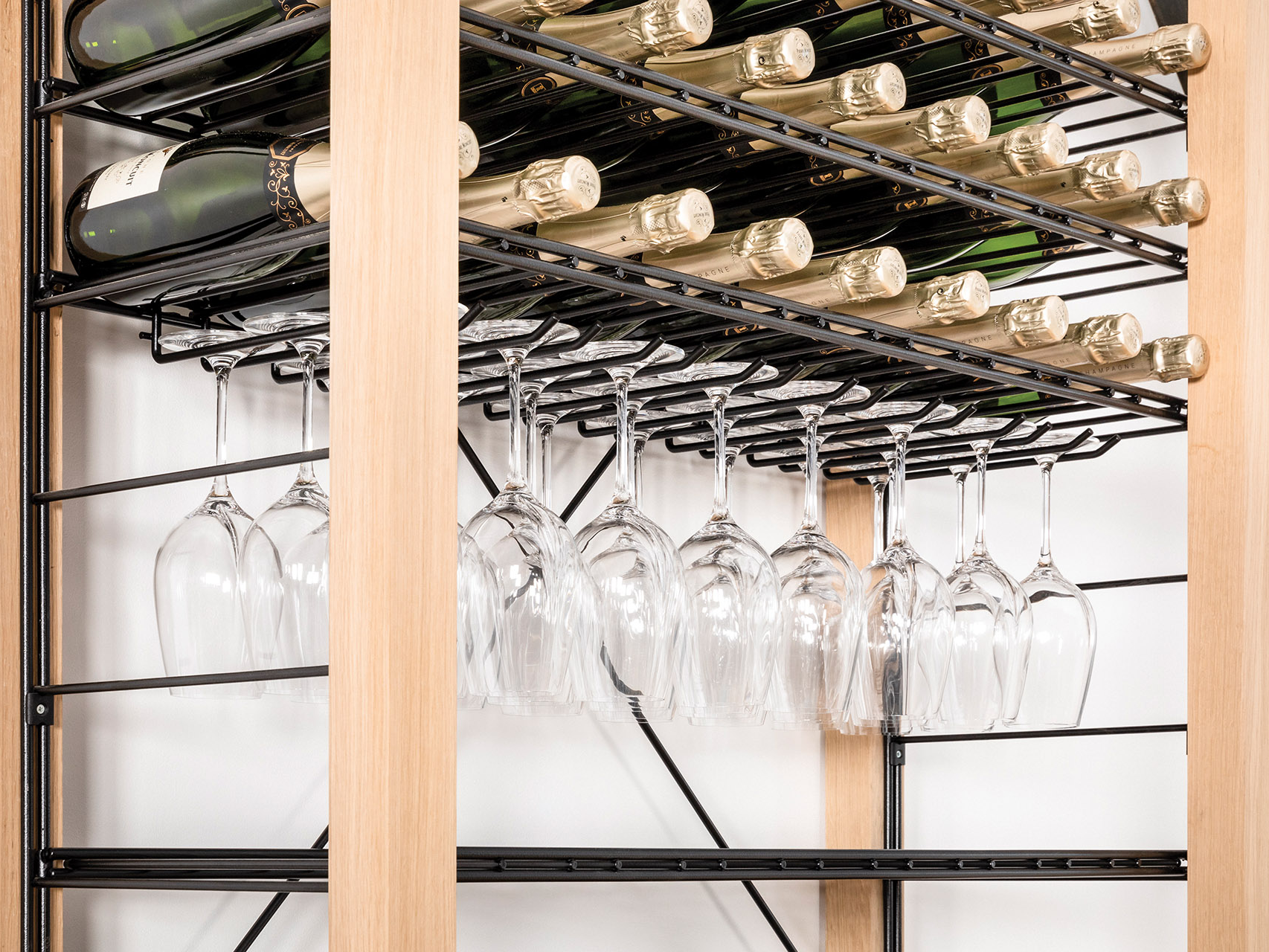A Few Wine Storage Myths
What are the best conditions for storing wine? There are all kinds of myths about the best practices to follow, some of which are false and should be avoided at all costs in a wine cellar… So beware of all the seemingly good ideas on the Internet, as they could turn your precious bottles of wine into vinegar! In order to debunk common misconceptions about wine storage, here is our take, as a manufacturer of modular and customisable wine cellars, Architecture Intérieure du Vin.
“Wine Tastes Better the Longer You Keep it”
In reality, the ideal ageing period in a wine cellar varies from one bottle to the next. Most wine in shops is intended to be drunk quickly. A good vintage can be kept for a few years to mature, depending on its characteristics, but wines that require more than 10 years of storage in an ageing cellar are rare.
A bottle’s ageing potential depends on many factors: the quality of the wine, region, vineyard, grape variety, year of harvest, vinification method, etc. Only great vintages or grands crus classés improve over time. A wine that is not suitable for ageing should not be stored for too long.
So how long should you store a bottle to enjoy it at its peak? If you are unsure, ask a wine merchant, sommelier, oenologist or wine producer about the recommended ageing period for each wine. Finally, remember that opening a bottle too early, rather than too late, is always better because once a wine turns, it is too late.
“Bottles Should Always Be Stored Sideways in a Wine Cellar”
It all depends on the wine and the type of cork. It is best to store still wines sealed with a cork on their sides, in order to keep the cork moist. A dry cork can shrink, and even crumble, which would let in air and cause the wine to oxidate, making it unfit for consumption.
However, bottles with synthetic stoppers or screw caps can be stored both upright and sideways. Champagne and sparkling wine can also be stored upright, even when sealed with a cork, because the gas contained in the bottle keeps it humid and air-tight.
“Wine Tastes Like Cork When Stored Sideways”
A molecule that can be found in cork, is what causes the unpleasant phenomenon of corked wine. If the cork has been contaminated by this chemical compound, then the wine may be tainted with a musty taste, caused by contact between the cork and the wine or oxygen contained in the bottle, no matter the position.
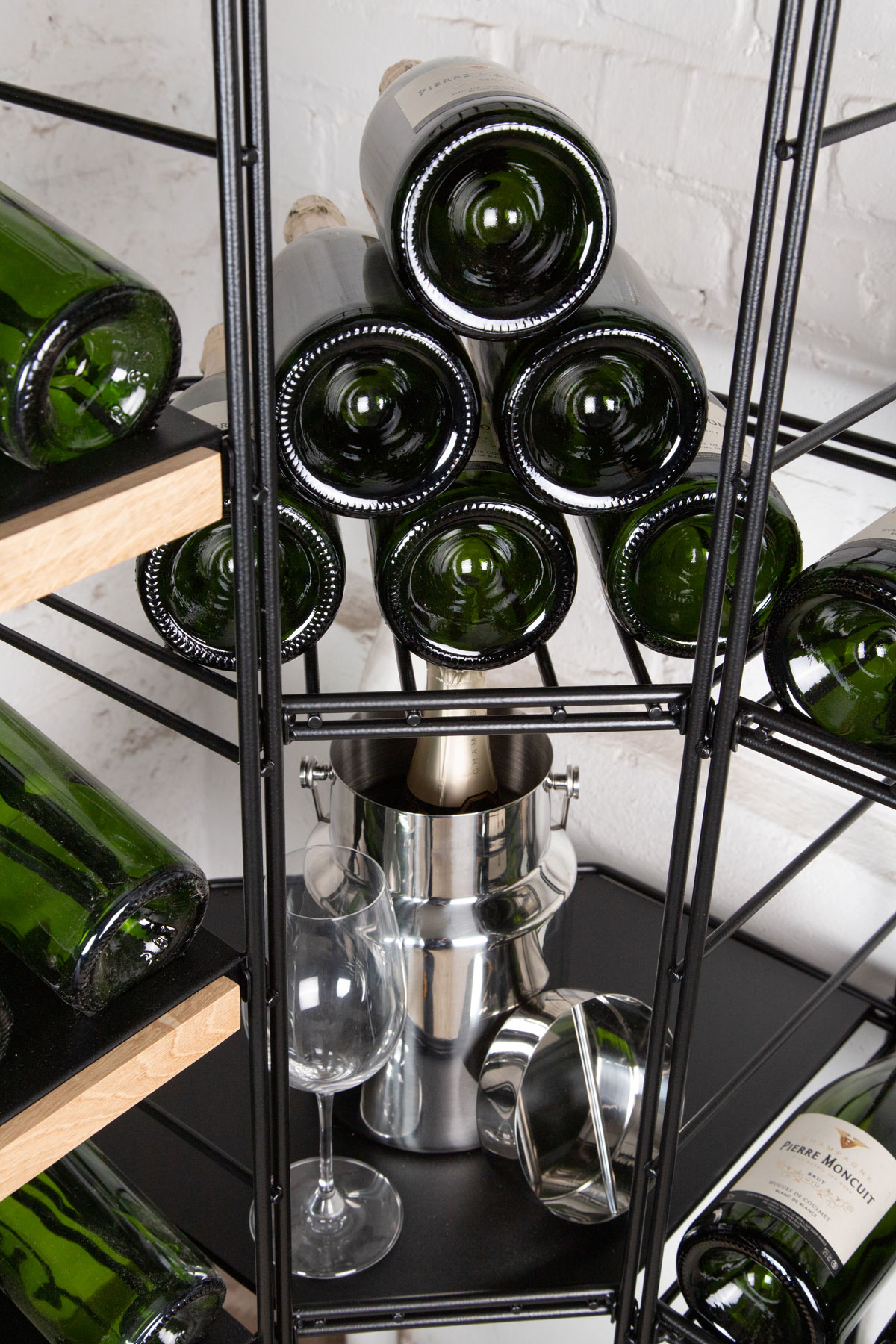
“Wine Should be Stored in a Dry Place”
Absolutely not! This wine storage misconception is less common but can sometimes be heard among novices. Although humidity is not recommended when storing most food products, the opposite is true for wine! Humidity is very important in a wine cellar, where levels should be maintained around 70% and can be measured with a hygrometer. Indeed, the humid air keeps the cork properly sealed and ensures that oxygen cannot get in. If the air is too dry, it can affect a bottle’s air-tightness and lead to oxidation.
“Red Wine Keeps Longer Than White Wine”

Wine can be very different from one vineyard to another and one year to the next. Some white wine vintages or grands crus, such as a fine Bourgogne, can be stored for several years and develop unexpected aromas after a decade in a cellar.
“Champagne Cannot Be Preserved”
This is yet another myth about champagne, similar to the one about white wine! Great vintages of champagne and sparkling white wine have the same ageing potential as a fine red wine.
“Deposit Is a Wine Storage Fault”
Over time, a deposit can form at the bottom of an ageing wine, or float in a bottle stored in a wine cellar. This is not a storage fault, or a sign of poor quality wine, but rather a natural phenomenon. It is the sedimentation of colour and tannin particles (dark and thick deposit), or the formation of fine scale crystals due to a sharp drop in temperature. If there is a deposit in your bottle when you open it, then handle with care and keep the sediment away from the neck when serving in a decanter or a tasting glass.
“A Wine Cellar Should be Underground”
Historically, wine cellars have always been underground. But wine can also be stored and aged in a contemporary wine space on the ground floor or higher, as long as the conditions are right. For centuries, basements have been the preferred location for wine cellars, for obvious reasons: it is easier to protect and preserve wine from temperature variations, daylight, vibrations and odours, while maintaining the necessary level of humidity and freshness.
Don’t have an underground space? Architecture Intérieure du Vin can help you create your custom wine cellar wherever you want.
“Bottles Should All Be Stored in the Same Space”
Not necessarily. The temperature in a wine cellar should be around 12°C on average, so red wine can be stored in a room between 12°C and 14°C, whereas white wine and champagne can be stored in a cooler room, with a temperature of 10°C to 12°C. Moreover, if you want to store a lot of bottles, it is best to organise your wine cellar into several spaces, in particular:
- A storage and ageing-cellar, which requires the utmost calm
- An area to prepare, open and aerate wine
- A wine tasting and oenology space
You can find lots more advice on this topic in our guide to different types of wine cellars. Whatever your project, Architecture Intérieure du Vin will provide you with an expert savoir-faire to help you create your personal or professional wine cellar. Contact us to find out more or ask for a quote.
Do not have an account yet?
